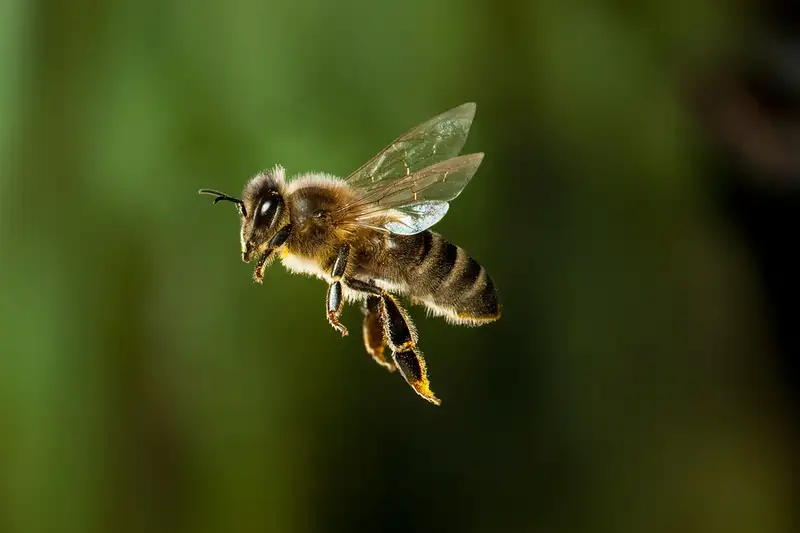There are many species of bees – each with different travel patterns, flight speeds and ranges. As a beekeeper, you want to place your hive close to local flora or a bee-friendly garden to get the most out of it. To do this, learn about migration patterns and maximum travel distances specific to your bee species.

Bees leave the hive for different reasons, such as nectar, pollen or water sources, and migrate at different distances. Knowing how far they may travel for these reasons is a key factor to consider when getting healthier hives.
How far can bees fly for food?
The answer is different for each species, we will focus on:
- Honeybees
- Bumblebees
- Loner bees
Honeybees
The flight distance of honeybees is usually 1 to 6 kilometers, but sometimes up to 13.5 kilometers. In fact, some bees move as far as 20 kilometers from the hive. With these findings, it’s clear that bees are not the doorstep gatherers.
Until we add temperature and food availability to the equation, all bees can only move over a larger range in ideal weather. They reach full foraging capacity at around 65 degrees Fahrenheit—and so do bees.
In winter, they need to be at least 55 degrees Fahrenheit while foraging to stay active. With fewer flowers available, bees will try to save energy by doorstep foraging.
Bumblebee
Bumblebees, Bombus terrestris L., are like bees; they do not like to forage for pollen and nectar near the hive. However, their foraging range is not as extensive as that of bees.
They fly moderate distances; for example, Bombus pascuorum does not seek food at a distance of less than 312 meters. Bombus terrestris feeds no less than 625 meters from the hive.
As you can see from the numbers, bumblebees thrive on shorter foraging journeys that are more energy efficient and safer.
Loner bees
We generalize such bees as nearby foragers, but this is not the case. Like other bee species, solitary bees have no research sources that can definitively demonstrate their foraging distances. Solitary bees can only forage over short distances to save energy and be safer, such as bees. It flies between 1 and 2.4 kilometers.
The euglossine bee (Euplasia surinamensis) was observed returning home from a distance of 24 km. Other lone bees also returned from distances of 14, 20 and 20 km with complete pollen baskets.
How far can bees fly for water?
The body of a bee is mostly water, and it needs a lot of water to survive.
Bees can walk 5 miles to find a suitable water source, and they return to the hive with nearly a gallon of water each day.
On hot days, bees focus more on getting water than pollen and nectar until the weather is good for pollination again.
Can human activity affect bees’ travel plans?
In order to know the distance bees travel for food and water, it is necessary to understand the external factors that negatively affect them. For example, the use of pesticides containing neonicotinoids tends to suppress the natural behavior and flight patterns of bees. It also greatly affects their ability to gather pollen, nectar and water.
The EMF and radiation generated by our technology can harm bees. They disrupt bees’ natural compass, making it difficult for them to travel accurately and safely. The situation is as dire for bees as it is for us – accelerating the destruction of agricultural landscapes and food supplies.
In summary
Most bee species have their own defined range of food and water travel. Under ideal conditions, some bees, such as honeybees and bumblebees, can fly long distances. Others, such as solitary bees fly shorter distances due to energy constraints and safety factors.
When conditions are less favorable, their flight range is shortened. This can be due to weather, food availability, and human activities such as EMP and radiation.
